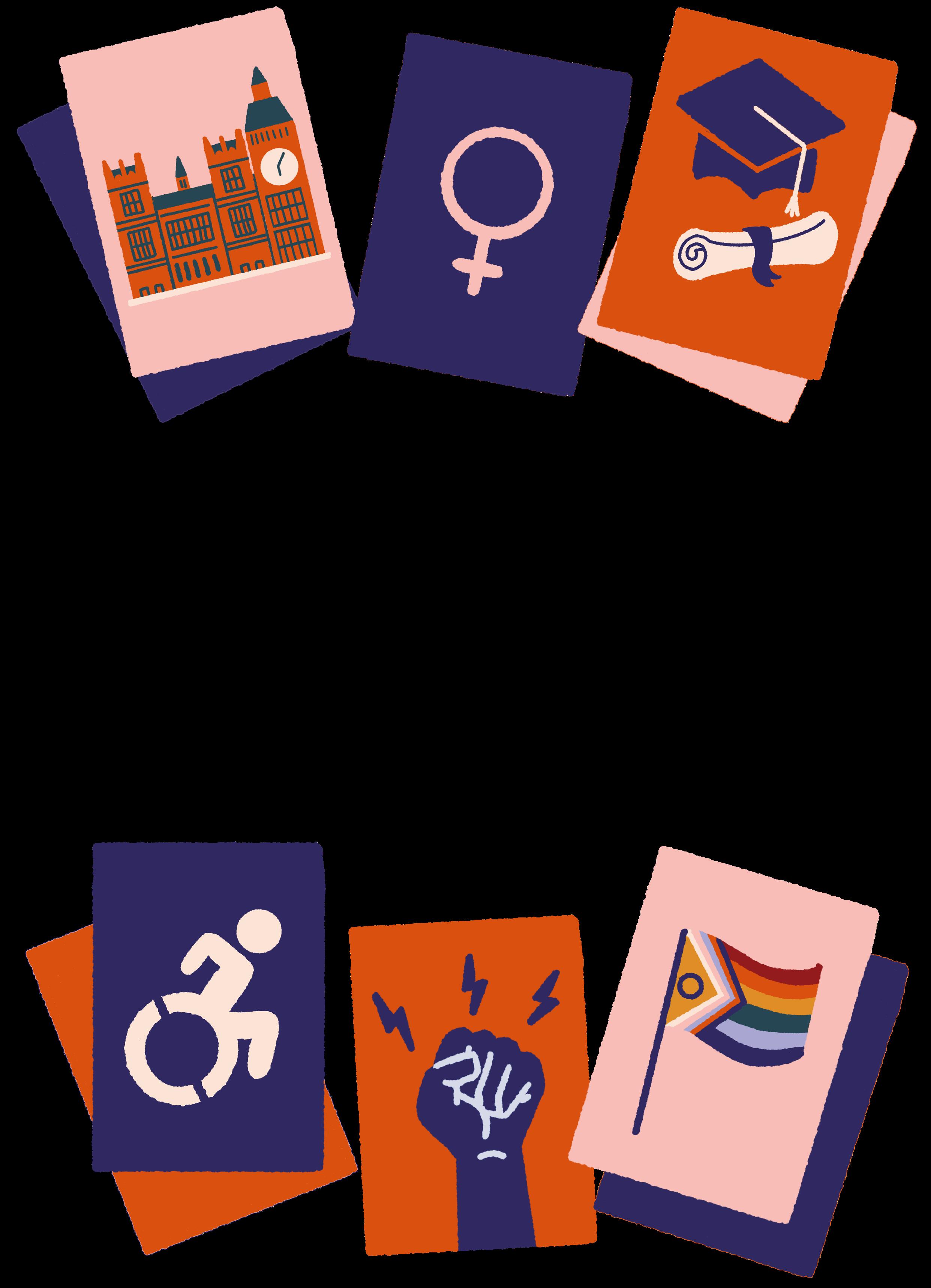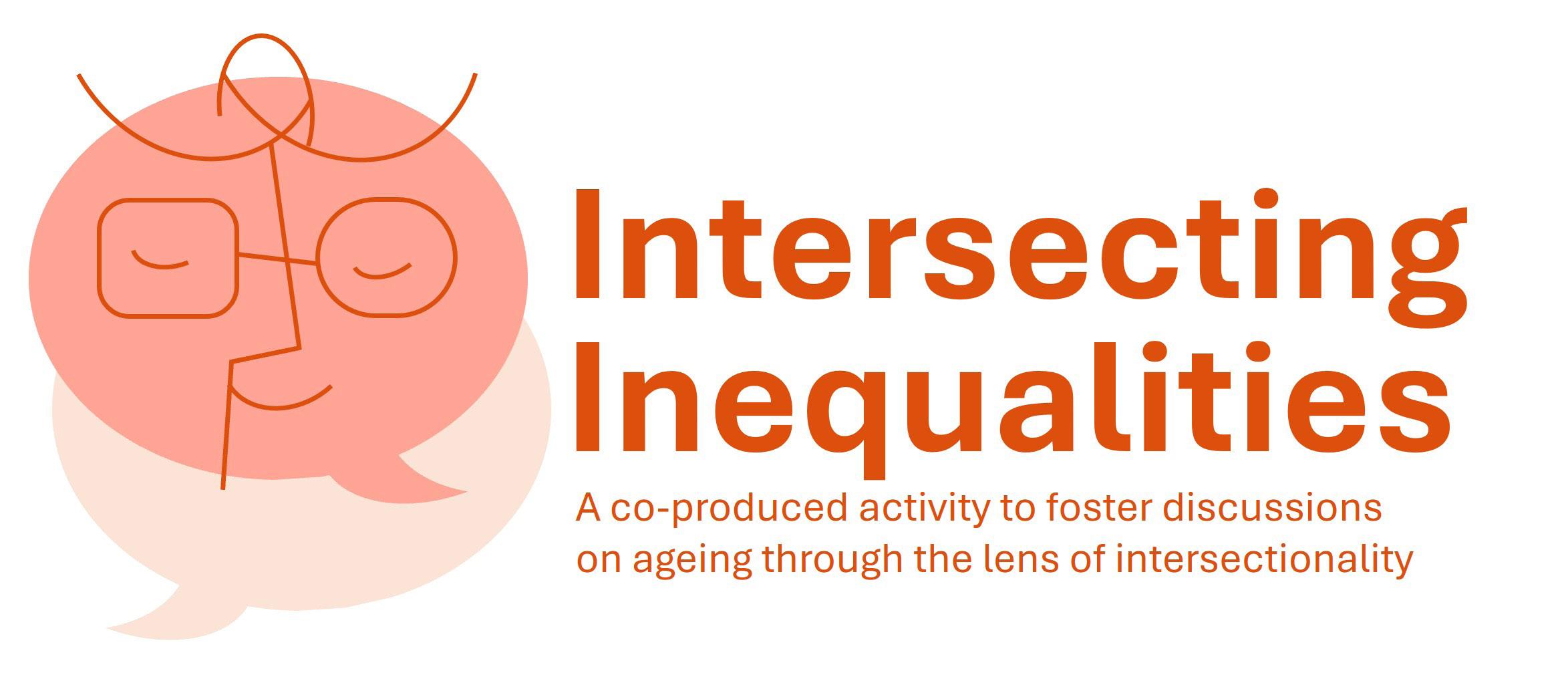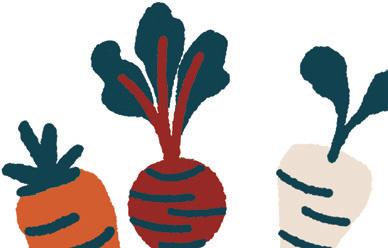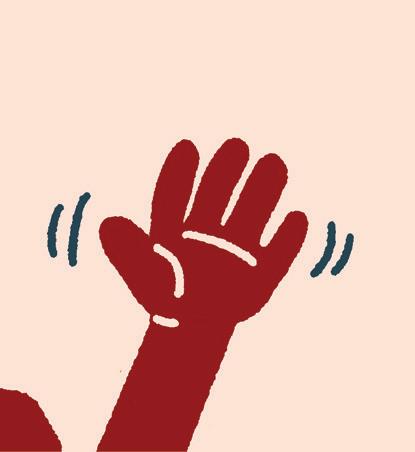




Intersecting Inequalities is a scenario-based activity designed to facilitate deeper, more inclusive conversations about ageing through the lens of intersectionality (Crenshaw, 1989). It builds on the animated resource (youtube.com/@ethnicityandunequalageing), which showcases how different identities (for example, one’s ethnicity, gender, sexual orientation, education) impact one another to affect the way people experience ageing in our society.
It recognises that as we age, we have different challenges and opportunities, and that older people are not a homogenous group. Their experiences of inclusion and exclusion in later life are shaped by not only individual behaviours but, more importantly, due to expressions of how their intersecting identities interact with power structures that are in place where they live throughout their lifecourse.

Besides this guide, we provide examples of scenarios that you can use, as well as questions/prompt cards that you can print to conduct the activity.
In case you have a specific problem in mind and want to create your own scenario, we suggest that you first think of a person (give them a name and age) who is facing a challenge that relates to your focus area (like housing, digital access, or social connection). Include their background, what’s important to them, what they’re struggling with, how it makes them feel, and why the problem isn’t easy to fix. Make sure they feel like a real person, not just a case study.
The prompt/questions cards are to be used in any scenario to slow down quick assumptions and deepen awareness of how different levels of power compound inequality. The goal isn’t to solve the scenario but to reflect on why the issue exists in the first place and how power, representation, and belonging are unevenly distributed and may get worse as we age.
We suggest the facilitator bring sticky notes, flipcharts and pens to make the activity more visual and interactive. We also suggest organising the attendees into tables to encourage deeper discussions in groups, which will be later shared with the wider group.







The following steps provide a guide for conducting the ‘Intersecting Inequalities’ activity over the course of one hour, or one and a half hours, if you want to include a break after Step 4.
1
Facilitator to explain to attendees that the activity aims to facilitate deeper reflections and discussions on ageing through the lens of intersectionality.
Duration: We suggest setting aside five minutes to allow people to accommodate themselves into their groups and to explain the activity

2

3
Play the animation: youtube.com/@ethnicityandunequalageing
Explain the intersectionality framework (page 5 of this guide) – this will allow participants to be on the same page in terms of what intersectionality means from the perspective of academics
Duration: We suggest ten minutes in total, including playing the animation, explaining the framework and encouraging reflections and questions about it.
Activity 1 focuses on enabling participants to understand their own positionality, including their privileges and/or disadvantages, facilitating a deeper understanding of Activity 2.
Facilitator to ask attendees to use sticky notes to write down the characteristics that make them who they are. To make things easier, the facilitator may ask attendees to write down characteristics that they would use to describe themselves to others (e.g. woman, Irish, grey hair, always looking at the positive side of life, an academic)
Duration: We suggest this to be an individual activity, and for the facilitator to ask afterwards if anyone wants to share what they wrote. We also suggest that facilitators set aside a maximum of five minutes for this activity.

4 6

Facilitator can write their own scenario or can use one of the examples provided.
Questions to ask attendees: Who is [person in the scenario]? Think about those characteristics that you used to describe yourself. How can we describe [person] based on this scenario?
Further questions to ask attendees: How might these aspects of [person] identity affect how [person] experiences inclusion and exclusion in this [situation in the scenario]?
Duration: We suggest this to be a group activity, and setting aside a maximum of ten minutes to discuss among them and write on flipcharts.
Facilitator will now bring the intersectionality framework to the discussion and ask attendees to think about the specific situation happening in the scenario. This is the opportunity where discussions will focus on strategies to overcome the situation described.
Questions to ask attendees: What do you think happened around [person in the scenario] for [the problem] to happen? Think about the context where [person] lives. What barriers are in place, considering the different levels in the intersectionality framework, that made this situation possible?
Further questions to ask attendees: What is missing in this scenario to make [person] feel more included?
Duration: We suggest this to be a group activity, and setting aside a maximum of ten minutes to discuss among them and write on flipcharts.


Facilitator to ask each group to share what they discuss and stir the group discussion in trying to find strategies to overcome the situation explained in the scenario
Duration: We suggest setting aside twenty minutes for this part of the activity
Childhood
Adolescence
Adulthood
Language
The concept of intersectionality was first coined in 1989 by Professor Kimberlé Crenshaw, from the U.S., in the context of explaining “a way of thinking about identity and its relationship to power”.
Intersectionality, in this context, refers to recognising how different aspects of a person’s identity (e.g., age, ethnicity, gender, disability, religion) interact and overlap to shape their experiences of ageing. It recognises that individual experiences are shaped by different types of oppression (e.g. racism, sexism, ageism) that can intensify inequalities throughout the lifecourse (infancy to old age).
The intersectionality framework chosen for this activity was adapted from the United Nations (https://unwomen.org.au/our-work/focus-area/intersectionality-explained/), with the original design modified from The Equality Institute’s intersectionality wheel.
Khalid, 56, works part-time as a veterinary nurse, a job he enjoys and takes pride in. He lives 40 minutes away from the
clinic.



Public transport in his area is unreliable and, some mornings, the bus doesn’t show up at all. To avoid being late, he wakes up much earlier and leaves the clinic later than he would like.
Owning and maintaining a car feels out of reach, as Khalid also cares for his teenage son, with any extra money going toward his care or future. The constant transport stress is wearing him down.

Veronika, 60, has spent most of her life working part-time while raising her three children alone. She uses a walking stick because of long-term joint pain.



She dreamed of owning her own home, but never had enough for a deposit. Now, she rents a small two-storey house far from a high street and the city centre. Her landlord has hinted that the rent will soon rise.
Veronika worries about the future and do esn’t want to be a burden to her children, but the uncertainty keeps her awake at night.


Arun, 72, was recently diagnosed with diabetes. He wants to be more active but can't afford the gym, and there are no familiar group activities nearby.




Most services recommended by the GP are online and hard to follow. Arun recently retired. He is energetic and keen to get involved in his city but often misses events because he doesn’t know where to find information.
He wishes there was a physical place or trusted person for updates.


Samira, 65, moved from Pakistan to the UK 10 years ago. She retired from her job as a manager to care for her ill husband.


She wants him to speak better English to be more independent but struggles to find affordable classes. He feels embarrassed joining younger groups.
Samira also wishes they had more friends and joined local events. Caring for her husband is affecting her health, and she feels less connected to the UK than she once did.

Kieran, 87, has had chronic pain for years. He visits his local GP practice often, but each time he's seen by a different doctor.


The advice he receives often changes from one app ointment to the next, and he struggles to build trust. He feels rushed and dismissed.
Kieran is frustrated but unsure how to express this in a way that might lead to change for him and others in his community. He’s starting to avoid going to the GP unless it’s urgent.


Monique, 78, lives in social housing with a small garden that she turned into a vegetable patch. She is retired and has a long history of volunteering.

She do esn’t feel confident navigating the bureaucracy and wishes there was more local support for grassroots ideas. n


She would love to start a shared gardening project with her neighbours, but the local council’s rules about shared space are unclear, and most nearby green spaces are privately owned.




What is the role of the government (local/national) in this scenario?
What could the voluntary sector do to help tackle this kind of experience?
How could other organisations reduce the sense of exclusion?
Who is missing from this picture? Whose voices are not being heard or considered?


How do other people’s attitudes or behaviour affect this person’s opportunities?
Is this situation likely to be experienced by other people?



What identities and other characteristics are mentioned that shape this person’s situation?
What is not mentioned / do we not see that may impact this person’s experience?
Is there anything this person can do, individually or collectively, to avoid experiencing what is mentioned in the scenario?
If you were this person’s friend or colleague, what could you do to supp ort them?





What barriers is this person facing that go beyond p ersonal motivation?
What kind of long-term or structural changes would help this person and others like them?
How can systems of oppression (e.g. racism, sexism, ageism) influence the experiences presented in this scenario?

The ‘Intersecting Inequalities’ activity was led by Dr Helena M Constante (Principal Investigator) and Co-Investigators Dr Rashida Bibi, Dr Joanne Britton, and Prof Majella Kilkey, from The University of Sheffield. The activity was co-produced with older racially minoritised groups in Rotherham and Sheffield, community researchers, community organisations Co-Investigators SADACCA (sadacca.co.uk), and REMA (rema-online.org.uk), and academics from the University of Sheffield, as well as Nifty Fox Creative (niftyfoxcreative.com). You can contact us and learn more about it at helenaconstante.com/projects
Please cite as: Constante HM, Bibi R, Britton J, Kilkey M. (2025). Intersecting inequalities: A co-produced activity to foster discussions on ageing through the lens of intersectionality. University of Sheffield. Access via helenaconstante.com/projects
Please let us know that you used the activity by tagging Dr Helena M. Constante in your LinkedIn postslinkedin.com/in/helena-m-constante
The original project was funded by the University of Sheffield’s Faculty of Social Science Discretionary Fund (Higher Education Innovation Fund from Research England) and by the ESRC ‘Ethnicity and Unequal Ageing’ project (ethnicityandunequalageing.ac.uk/ - PI Prof Majella Kilkey; Reference: ES/W012383/1).
In partnership with Sponsored by







Designed
by
